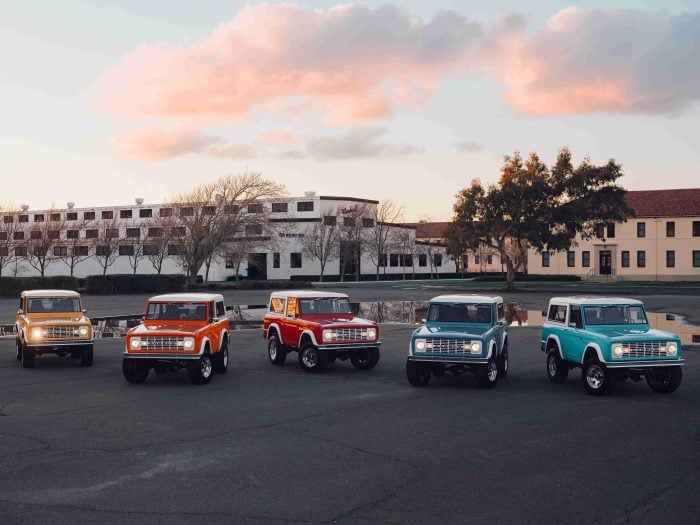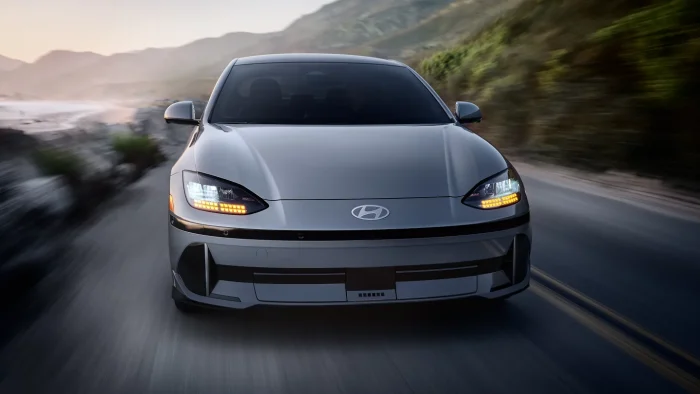Few people have had as lasting an impact on today’s commuting culture as Englishman William Grout. Born in London in 1839, Grout revolutionized the bicycle by adding high-performance innovations like rubber tires. In 1878, he created a tire that could be removed from the front of the bike so it could be folded for storage. This was, by most accounts, the first foldable bike. The problem was that the process of disassembling the tire took nearly 10 minutes, and that was more time than the average commuter running late to work had to spare. Fortunately, the powers that be – meaning those brilliant bike innovators running the design departments at the companies of today – took Grout’s idea and modernized it, making it not only more efficient (and actually foldable without taking the frame apart), but also smaller, easier to store, and, for some, the addition of an electric motor.
Foldable bikes are not going to win speed races, have the longest e-bike range or rip down mountainsides with ease. For the latter, you need a dedicated mountain bike. If put to a bicycle popularity contest, folding bikes also aren’t taking home “best dressed” or “most likely to become a cover model” awards. But if you can get over the slight and slightly awkward composure, there isn’t a more practical way to get around the city, and the increasing ubiquity of electric motors on foldable bikes for adults means you don’t even have to break a sweat on the way to work.
Are foldable bikes practical?
Many, or at least myself, have argued for years that the bicycle is a one-size-fits-all solution to several of the major problems plaguing cities today. Every bike ridden into a city center saves not only a parking space, but also gas and the inevitable traffic and smog that result from burning it. But what to do when your gym doesn’t have a bike rack and your boss won’t allow bikes to be shoddily strewn about the office lobby?
Enter the foldable bike. Instead of being built upon one main steel or carbon frame, foldable bikes are made from several parts hinged together by quick-release clamps. The best options include lighting systems for night commutes and safety locks that kick in when folded. Nearly everything about the foldable bike is removable, or at the very least adjustable. That means the bike can be collapsed down to a fraction of its normal size, oftentimes becoming small enough to store in a closet or underneath a desk (or even into a backpack).
Foldable bikes are built for commuters and everyday urban riders. You don’t want to take one to the pump track or attempt The Whole Enchilada in Moab on a bike with 16-inch tires. And admittedly, those tiny tires look ridiculous at first glance. But it’s time to get over any preconceptions because, as Nigel Powers wisely informed us in the 2002 cult classic Goldmember, it’s not the size that matters, mate – it’s how you use it.
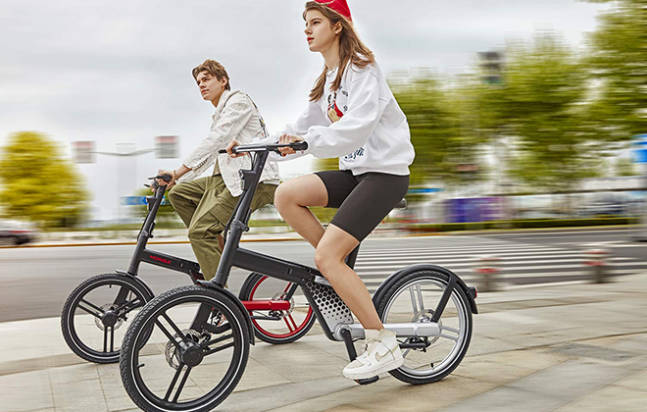
What Are the Disadvantages of a Folding Bike?
For all their perks, there are a few things to take note of before you buy a foldable bike. The first is that the ride is going to be bumpier. Many foldable bikes have 16- or 20-inch tires, and with minimal fork adjustment, you’re going to feel that pothole. In bike lanes and smoother roads, this isn’t as noticeable. This bumpiness, however, is furthered by the fact that foldable bikes aren’t as stiff as normal bikes, due to the multitude of parts held together by the clamps.
Another disadvantage of foldable bikes is that they can be uncomfortable for tall people. If you’re taller than 78 inches, it can be tough to find a foldable bike that will comfortably fit you, even with extended seat posts and handlebars. Lastly, foldable bikes are heavier than normal bikes. If you already commute on an electric bike, this won’t come as a surprise, as that battery and motor add a fair bit of weight.
Are Folding Bikes Good for Long Distance?
Perhaps the biggest downside to foldable e-bikes is that the range of the electric battery is smaller — often less than 30 miles. That makes the bike less than ideal for long pleasure rides. You’ll need to carefully monitor the distance traveled on your rides using an app like Strava to ensure that you won’t run out of juice before reaching the destination. There are a few ways to help offset the limited range. First, keep a charger with you at work or wherever it is that you commute to most often. This allows you to top off the battery during the day. Another hack is to turn off the electric motor during flat or downhill stretches to save power.
The Best Foldable Bike in Each Price Range
Schwinn Loop Adult Folding Bike
At the low-end entry point, the Schwinn Loop provides both a trusted name in bikes with consistent performance that doesn’t require a large upfront investment. This bike easily folds down from the handlebars and weighs 33 pounds. The weight comes entirely from the frame and traditional bike parts, as this isn’t an e-bike. You can use its human-powered drive train and low price to your advantage, though, because there’s no better way to turn your daily commute into your daily workout without taking up much additional space at home or at work.
Buy Now $415
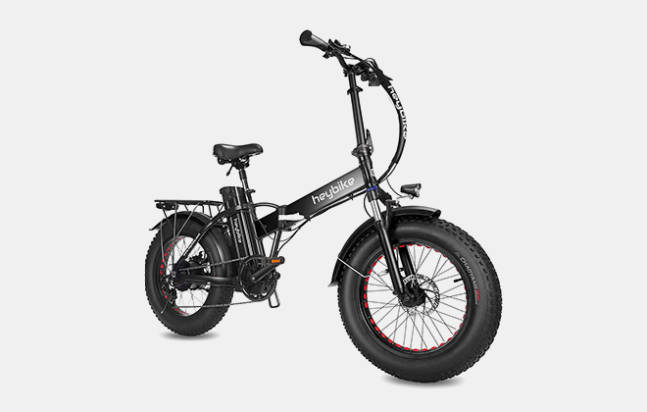
Heybike Mars Electric Bike Foldable
The Heybike Mars Electric Bike allows you to add an electric drivetrain to a basic foldable bike frame and nearly quadruple the performance metrics of the Schwinn Loop for a little more than double the cost. Thick, 20-inch tires make this the best foldable bike on this list for commuting through varied terrain, particularly if some of that terrain is dirt. Its 48-mile range is incredible at this price point. With the built-in lighting system for commuting during dusk or at night and an easy-to-fold aluminum frame, this is the best entry-level electric foldable bike on the market. No wonder it’s a best seller – and it even arrives at your door pre-assembled.
Buy Now $1,050
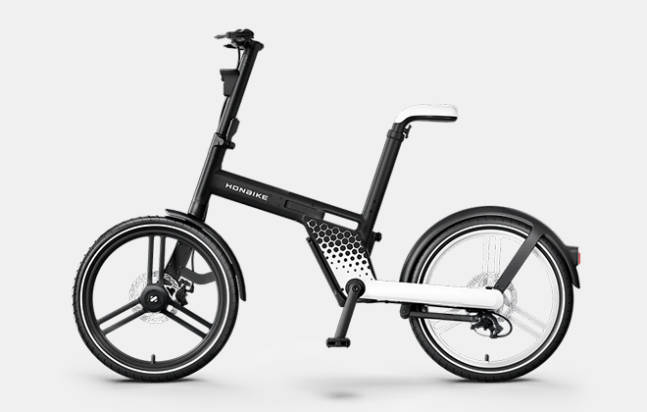
Honbike HF01 Commuter E-bike
If there was a perfect foldable e-bike explicitly made to fit the needs of the urban apartment dweller who commutes not just to work, but for work, it would be the Honbike HF01. The Japanese-made bike strips out all the fancy stuff to make room for add-on accessories that workers from office jockeys to delivery drivers actually need, like a front cargo basket and rear carrier attachment. This Honbike model weighs 44 pounds and folds down to under three feet in length – 35.8 inches, to be exact, which is ideal for storage and commuting via trains and buses. Its electric, belt-powered drivetrain, 16-inch wheels, and Monotork Clean Shaft drive system help to make this among the most stable of foldable bikes. It also features Hill-Start Assist Technology that automatically kicks in when you pedal up an incline. These characteristics make it excellent for heavy daily use – as long as you can top off its battery if your commute is longer than 24.9 miles.
Buy Now $1,999
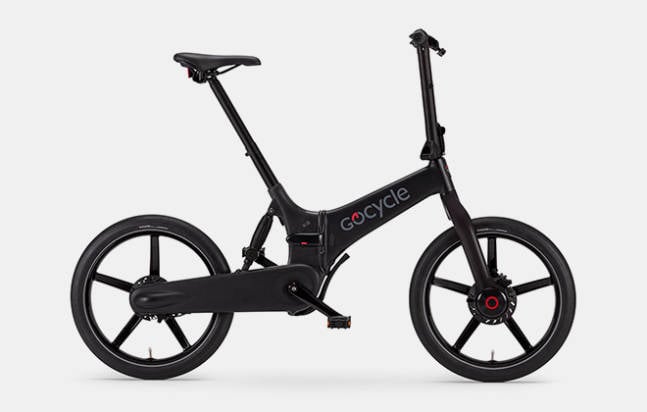
GoCycle G4
The GoCycle G4 is 38.8 pounds of foldable electric power. It’s a perfect introduction to high-end foldable bikes because its 20-inch wheels add more cushion between you and the road than bikes with 16-inch wheels. That makes for a smoother ride, amplified by an aluminum frame and carbon fiber core that makes this a strong bike not deterred by varying topography or weather. Though this bike isn’t cheap, were it my money, I’d opt for the GyCycleG4 due to this and its claimed range of 40 miles. The GoCycleConnect app allows you to track your rides and fitness stats (for watercooler conversation at the office, of course), with the folded bike being 88cm x 39cm x 61cm. The bike also features a USB port connected to its battery so you can charge your phone on the way from work to happy hour.
Buy Now $3,999
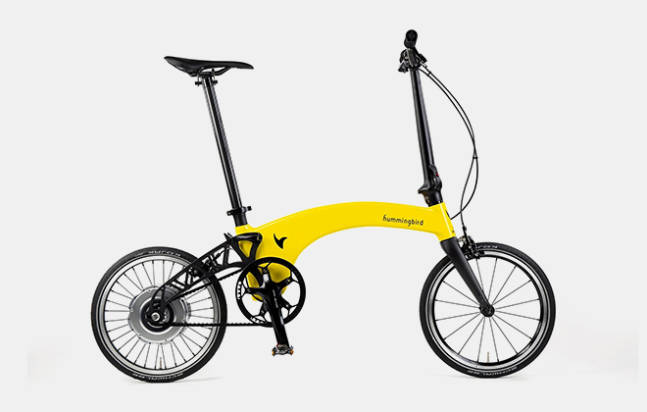
Hummingbird Electric Folding Bicycle Gen 2.0
The Hummingbird Electric Folding Bicycle Gen 2.0 is a foldable bike for adults (and at more than $5,000, it’s priced for a certain type of biking adult). It’s a great example of why it feels so good to go all out when picking a foldable bike. Hummingbird claims this bike folds in five seconds, and its quick-release levers back up that claim with gusto. For your money, you get 31 miles of range and a “boost” mode that can be kicked in at the start of inclines. Riding this bike is like hitting the river on an inflatable stand-up paddleboard in that the performance is so darn close to what you’d expect out of any high-end bike that it makes you question even the thought of buying something that doesn’t collapse and store so easily. In addition to its 250W motor and Active Electric Lock system, you’ll get a smart bike that connects to the Bitride app via Bluetooth so you can customize your ride and track performance metrics. This 22.7-pound bike is the lightest on this list, so even if you live in a five-story walk-up, there’s no need to dread getting home from work.
Buy Now $5,200



